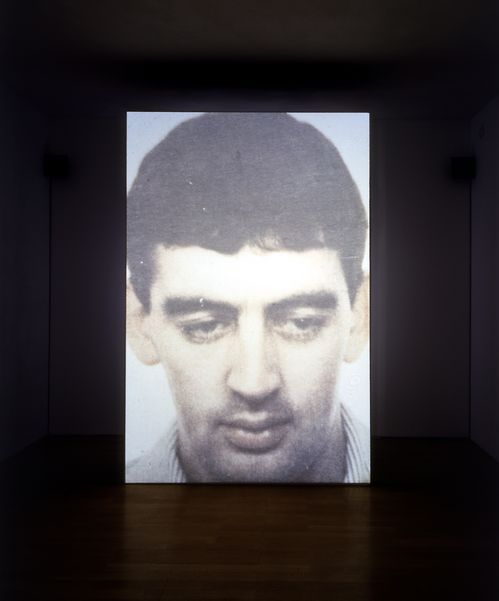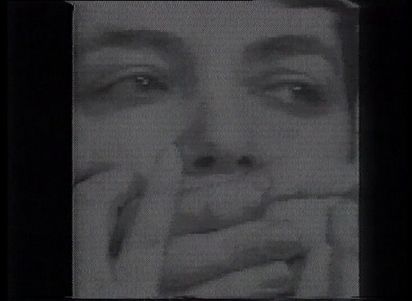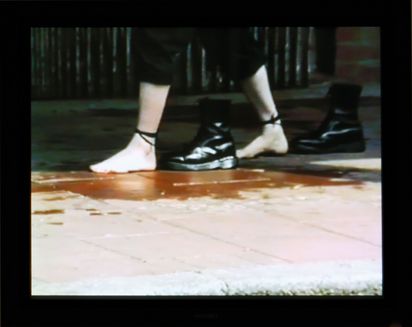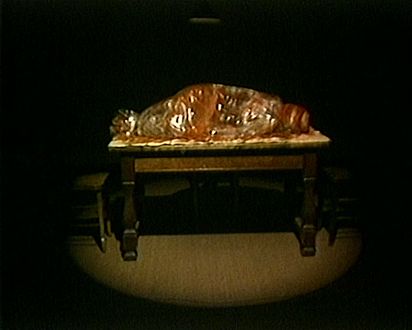Since the end of the 1980s the focus of Willie Doherty´s work has been Northern Ireland with its unique political situation. He has produced pictures of general interest, which have relevance beyond the geographical context in which they were taken. His work includes black-and-white photos, videos and, in the case of They're All the Same, slide projections accompanied by spoken text.
The specific object of the present work concerns a color photograph Doherty took from the title page of the British paper the Daily Mirror dated July 8, 1991 which he then projected in its own darkened space on a simple, approximately 3-meter-high wooden screen as a static picture accompanied by text. The viewer confronts an oversized head and look of a melancholic, sensible and introverted young man. This subjective impression is bound to conflict with the newspaper´s intention when publishing the photograph: it concerns a police wanted persons photograph of the escaped IRA-terrorist suspect Nessan Quinlivan who, according to the Daily Mirror is one of Europe´s most dangerous men. The ambiguity of the photograph stimulated Willie Doherty´s interest because to him it appeared utterly inappropriate to present the person as a dangerous, cold-blooded terrorist. It rather points to another facet of the human being and it is this split in the personality that the artist endorses with his spoken text. Doherty does not process the pictures he has found since he seeks to avoid appearing as an author but rather as a force of "support or organization".[1]
He also applies this standard to his complicatedly constructed text montages: here, he contrasts a poetic and cliché-like landscape description of his native Irish home taken from a travel guide of the 1930s with the two competing `I´s of an inner dialogue, which places the work in a concrete context of the state exercise of power and individual powerlessness: "I'm barbaric", "I'm decent and truthful" - "I am patient. I have a vision" - "I'm pathetic"[2]. Doherty contradicts one-dimensional and simplistic representations of the kind that dominate mass-media reportage. In his interpretative analysis he makes us aware of the fact that he is not only providing one reality, one true perspective but rather that each picture and each commentary is already an interpretation of its author. He fundamentally questions the authenticity of the pictures, which are in fashion as proof of facts and for the creation of truths and warns us of the influential power of the media. Doherty´s works are highly relevant in an age which, on the one hand, depends on the almost simultaneous and global availability of pictures of every important event as evidence of such events, and in which, on the other hand, no picture can be trusted any more thanks to digital processing. In the uncertainty and confrontation that Doherty's works provoke in observers and their selective-subjective perception, they serve as a plea for individual questioning and for the formation of one´s own grounded opinion.
(Text by Stephan Urbaschek from: Aschemünder, Ostfildern 2011)
[1] From: Dirk Snauwaert, ”It could be lots of places. Interview with Willie Doherty“, in Art from the UK, Sammlung Goetz (cat.), Munich, 1997, p. 52: "as a kind of facilitator or organizer."
[2] Ibid., p. 39.





